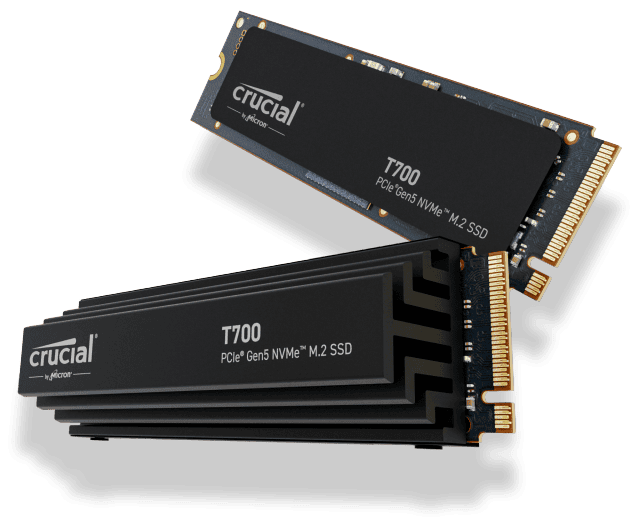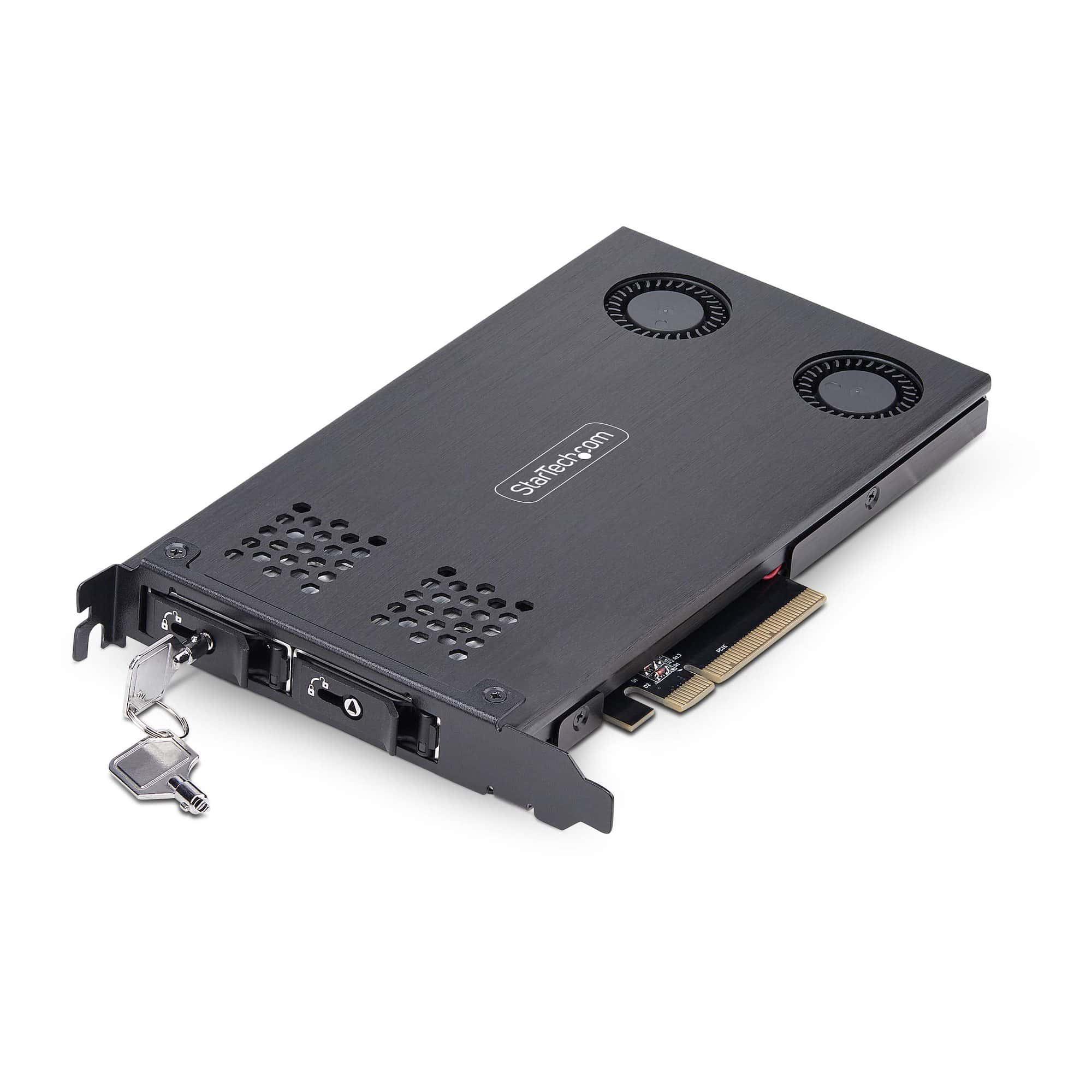PCIe and SATA SSDs are two popular storage options for computers. While both improve performance over traditional hard drives, they differ in speed and connectivity. PCIe SSDs offer much faster data transfer rates than SATA SSDs, typically reaching speeds of 3500 MB/s or higher for sequential read operations.
When choosing between these SSD types, consider your needs and budget. SATA SSDs are more affordable and work with older systems, but PCIe SSDs excel in speed-critical tasks like video editing or gaming. The price gap between the two has narrowed, making PCIe SSDs increasingly attractive for many users.
| Feature | SATA SSD | PCIe SSD |
|---|---|---|
| Speed | Up to 600 MB/s | 3500+ MB/s |
| Cost | Lower | Higher |
| Compatibility | Wider | Newer systems |
| Form Factor | 2.5-inch, M.2 | M.2, add-in card |

PCIe vs. SATA SSDs: A Speed Showdown
Solid State Drives (SSDs) have revolutionized computing with their blazing-fast speeds compared to traditional hard drives. But did you know there are different types of SSDs? PCIe and SATA are the two main interfaces used to connect SSDs to your system, each with its own performance characteristics. Understanding the difference can help you choose the right SSD for your needs.
SATA SSDs
- SATA Interface: Uses the SATA (Serial ATA) interface, which was originally designed for traditional hard drives.
- Limited Bandwidth: SATA III, the latest version, has a maximum theoretical bandwidth of 600 MB/s (megabytes per second).
- Good Performance: Still significantly faster than hard drives, offering noticeable improvements in boot times, application loading, and overall system responsiveness.
- Cost-Effective: Generally more affordable than PCIe SSDs.
PCIe SSDs
- PCIe Interface: Utilizes the PCIe (Peripheral Component Interconnect Express) interface, designed for high-speed data transfer.
- Higher Bandwidth: PCIe offers much greater bandwidth than SATA, with PCIe 4.0 SSDs reaching speeds of up to 7,000 MB/s and PCIe 5.0 SSDs pushing beyond 14,000 MB/s.
- Exceptional Performance: Delivers incredibly fast read and write speeds, ideal for demanding tasks like gaming, video editing, and large file transfers.
- NVMe Protocol: Often uses the NVMe (Non-Volatile Memory Express) protocol, which is optimized for SSDs and further enhances performance.
- Higher Cost: Typically more expensive than SATA SSDs.
Which Should You Choose?
The choice between PCIe and SATA SSDs depends on your needs and budget:
- SATA SSDs: A great upgrade from a hard drive, offering a noticeable performance boost at an affordable price. Suitable for everyday computing, web browsing, and casual gaming.
- PCIe SSDs: Ideal for power users, gamers, and content creators who demand the fastest possible storage performance. Offers a significant advantage in demanding applications and heavy workloads.
PCIe vs. SATA SSDs
| Feature | SATA SSD | PCIe SSD |
|---|---|---|
| Interface | SATA III | PCIe 3.0/4.0/5.0 |
| Maximum Speed | 600 MB/s | Up to 14,000 MB/s (PCIe 5.0) |
| Performance | Good | Exceptional |
| Cost | Lower | Higher |
By understanding the differences between PCIe and SATA SSDs, you can make an informed choice that aligns with your performance requirements and budget.
Understanding SSD Technologies
Solid-state drives (SSDs) have revolutionized data storage with their speed and reliability. SATA and PCIe interfaces offer different performance levels and compatibility options for SSDs.
Overview of SATA SSDs
SATA SSDs connect to computers using the Serial Advanced Technology Attachment interface. This standard interface has been widely used in storage devices for many years. SATA SSDs typically come in 2.5-inch form factors, making them compatible with many laptops and desktops.
Key features of SATA SSDs:
- Maximum speed: Up to 600 MB/s
- Widely compatible with older systems
- More affordable than PCIe options
- Available in 2.5-inch and M.2 form factors
SATA SSDs offer a significant speed boost over traditional hard drives. They’re a cost-effective way to improve your computer’s performance without needing the latest hardware.
Overview of PCIe SSDs
PCIe SSDs use the Peripheral Component Interconnect Express interface. This newer technology allows for much faster data transfer rates than SATA. PCIe SSDs come in various form factors, including add-in cards and M.2 drives.
PCIe SSD advantages:
- Speeds can exceed 15 GB/s with PCIe 4.0
- Lower latency than SATA SSDs
- Ideal for high-performance computing tasks
- Future-proof with ongoing speed improvements
PCIe SSDs are best suited for users who need the fastest possible storage speeds. They excel in tasks like video editing, 3D rendering, and running virtual machines.
SATA vs PCIe Interface
The choice between SATA and PCIe interfaces impacts your SSD’s performance and compatibility. Here’s a comparison:
| Feature | SATA | PCIe |
|---|---|---|
| Max Speed | 600 MB/s | 15+ GB/s |
| Cost | Lower | Higher |
| Compatibility | Wider | Newer systems |
| Power Usage | Lower | Higher |
| Ideal Use | General computing | High-performance tasks |
SATA is better for users looking to upgrade older systems or those on a budget. PCIe is the go-to choice for high-end builds and professional workstations where speed is crucial.
The Role of NVMe in SSD Performance
NVMe (Non-Volatile Memory Express) is a protocol designed specifically for SSDs using the PCIe interface. It reduces latency and improves performance compared to older protocols.
NVMe benefits:
- Optimized for flash storage
- Supports more queues and commands than SATA
- Reduces CPU overhead for storage operations
- Enables faster boot times and application loading
When choosing a PCIe SSD, look for NVMe support to get the best performance. NVMe drives are becoming more common and affordable, making them a great choice for your next storage upgrade.
Form Factors and Connectivity
SSD form factors and connectivity options play a crucial role in determining compatibility and performance. Different designs offer varying advantages in terms of size, speed, and ease of installation.
2.5-Inch and mSATA SSDs
2.5-inch SSDs are the most common form factor. They use the same size and shape as traditional laptop hard drives. This makes them easy to install in most laptops and desktops. 2.5-inch SSDs connect via SATA cables for both power and data transfer.
mSATA SSDs are smaller, about one-eighth the size of 2.5-inch drives. They were popular in ultra-thin laptops and tablets. However, mSATA is becoming less common as newer form factors take over.
| Form Factor | Size | Common Use | Connectivity |
|---|---|---|---|
| 2.5-inch | 100 x 70 mm | Laptops, Desktops | SATA |
| mSATA | 50 x 30 mm | Thin Laptops, Tablets | SATA |
Both types use SATA interfaces. This limits their maximum speed compared to newer PCIe-based options.
M.2 SSDs and Slots
M.2 SSDs are stick-shaped drives that plug directly into motherboard slots. They come in various lengths, with 2280 (80mm long) being the most common. M.2 SSDs can use either SATA or PCIe interfaces.
PCIe-based M.2 SSDs often use the NVMe protocol. This allows for much faster speeds than SATA. Some high-end M.2 SSDs can reach speeds over 7000 MB/s.
M.2 slots on motherboards may support PCIe, SATA, or both. It’s important to check your motherboard specifications to ensure compatibility.
Motherboard Compatibility and Connectivity
Modern motherboards often include multiple M.2 slots. This allows for easy expansion of fast storage. Some boards may have limitations on which slots support PCIe 4.0 speeds.
For 2.5-inch SSDs, motherboards typically have several SATA ports. These are usually located along the edge of the board.
Compatibility with M.2 slots can vary. Some only support certain lengths or interface types. Always check your motherboard manual before purchasing an M.2 SSD.
PCIe SSDs can also come in add-in card form factors. These plug into PCIe slots like graphics cards. They offer high performance but take up more space than M.2 drives.
Performance Considerations
PCIe and SATA SSDs differ significantly in their performance capabilities. These differences impact speed, responsiveness, and overall system efficiency.
Speed and Transfer Rates
PCIe SSDs offer much faster data transfer speeds compared to SATA SSDs. PCIe 3.0 SSDs can reach speeds up to 15.76GB/s, while SATA III maxes out at 6 Gb/s. This gap widens further with newer PCIe versions.
PCIe 4.0 SSDs can achieve speeds around 32GB/s, and PCIe 5.0 pushes this to an impressive 64GB/s. These high speeds make PCIe SSDs ideal for tasks requiring quick data access and transfer.
SATA SSDs, while slower, still offer good performance for everyday computing tasks. They’re often more budget-friendly and provide sufficient speed for most users.
| Interface | Max Speed |
|---|---|
| SATA III | 6 Gb/s |
| PCIe 3.0 | 15.76GB/s |
| PCIe 4.0 | 32GB/s |
| PCIe 5.0 | 64GB/s |
Read and Write Speeds
Read and write speeds are crucial factors in SSD performance. PCIe SSDs excel in both areas, offering faster data retrieval and storage.
PCIe SSDs can deliver speeds up to 15.75 GB/s, outpacing SATA SSDs significantly. This speed difference is due to the interfaces each type uses. SATA was originally designed for hard disk drives, limiting its speed potential.
For tasks like video editing, 3D rendering, or working with large datasets, PCIe SSDs provide a clear advantage. They allow for quicker file access and shorter load times.
SATA SSDs, while slower, still offer good read and write speeds for general computing needs. They’re suitable for most users who don’t require extreme performance.
System Responsiveness and Multitasking
The enhanced speed of PCIe SSDs translates to improved system responsiveness and better multitasking capabilities. Your computer feels snappier and more responsive with a PCIe SSD.
Applications load faster, and switching between tasks becomes smoother. This improved responsiveness is especially noticeable when working with resource-intensive programs or handling multiple tasks simultaneously.
SATA SSDs also offer good system responsiveness, particularly when compared to traditional hard drives. For everyday computing tasks, a SATA SSD provides a significant boost in system performance and responsiveness.
The choice between PCIe and SATA SSDs often depends on your specific needs and budget. PCIe SSDs offer top-tier performance, while SATA SSDs provide a good balance of speed and affordability for most users.
Real-World Applications and Upgrade Implications
PCIe and SATA SSDs offer distinct performance characteristics that impact various computing tasks. Their differences become apparent in everyday use across different applications and scenarios.
Gaming and Content Creation
PCIe SSDs excel in gaming and content creation tasks. Games load faster and texture streaming improves with PCIe drives. This results in reduced waiting times and smoother gameplay.
PCIe 5.0 SSDs offer even greater speeds, potentially eliminating load screens in future games. However, current games may not fully utilize this extra speed.
Content creators benefit from PCIe SSDs when working with large files. Video editing, 3D rendering, and other resource-intensive tasks see significant performance boosts.
SATA SSDs still provide good performance for most users. They offer noticeable improvements over traditional HDDs in loading times and file transfers.
| SSD Type | Gaming Performance | Content Creation |
|---|---|---|
| PCIe | Excellent | Excellent |
| SATA | Good | Good |
| HDD | Poor | Poor |
Video Editing and Web Browsing
Video editors benefit greatly from PCIe SSDs. They allow for faster scrubbing through timelines and quicker exports. This can save hours on large projects.
For web browsing, the difference between PCIe and SATA SSDs is less noticeable. Both offer quick boot times and fast application launches.
PCIe SSDs shine when dealing with large file transfers or running multiple applications simultaneously. This makes them ideal for power users and multitaskers.
SATA SSDs provide a balanced option for everyday computing tasks. They offer significant improvements over HDDs without the higher cost of PCIe drives.
Battery Life and Power Consumption
Laptop users should consider power consumption when choosing between PCIe and SATA SSDs. PCIe drives generally consume more power due to their higher performance.
This increased power draw can impact battery life. However, the difference is often minimal in real-world use.
SATA SSDs typically offer better power efficiency. This makes them a good choice for users prioritizing battery life over maximum performance.
Both SSD types consume significantly less power than traditional HDDs. This results in improved battery life compared to older laptops with spinning disks.
Storage Capacity and Longevity
PCIe and SATA SSDs are available in various capacities. High-capacity drives now rival traditional HDDs in storage space.
SATA SSDs are often more affordable for larger capacities. This makes them a popular choice for users needing more storage without breaking the bank.
PCIe drives, while pricier, offer higher capacities in smaller form factors. This is particularly useful in compact systems or laptops.
Both SSD types use NAND flash memory, which has limited write endurance. However, modern SSDs typically last for many years under normal use.
Warranties for SSDs often range from 3-5 years. This provides peace of mind for users concerned about longevity.
Frequently Asked Questions
PCIe and SATA SSDs differ in several key areas. These include performance, compatibility, and potential impacts on gaming. Understanding these differences can help you choose the right SSD for your needs.
What are the differences in performance between PCIe and SATA SSDs?
PCIe SSDs offer significantly faster data transfer rates than SATA SSDs. PCIe SSDs can reach speeds of several gigabytes per second. SATA SSDs are limited to about 600 MB/s due to interface constraints.
PCIe SSDs also have lower latency. This means quicker response times for data access.
Can PCIe SSDs significantly improve gaming compared with SATA SSDs?
PCIe SSDs can improve game loading times. You’ll notice faster level loads and shorter waits between scenes.
For gameplay itself, the difference is less noticeable. Once a game is loaded, both SSD types perform similarly.
What makes NVMe SSDs different from traditional PCIe SSDs?
NVMe is a protocol designed specifically for SSDs using the PCIe interface. It reduces overhead and improves efficiency.
NVMe SSDs offer even better performance than standard PCIe SSDs. They have lower latency and can handle more commands simultaneously.
Are there compatibility considerations when choosing between PCIe and SATA SSDs?
Yes, compatibility is important. SATA SSDs work with most systems. They use a standard connector found on many motherboards.
PCIe SSDs require a PCIe slot or M.2 connector. Older systems may not support PCIe SSDs without an adapter.
How does PCIe 2.0 compare in speed with SATA SSDs?
PCIe 2.0 SSDs are faster than SATA SSDs but slower than newer PCIe versions. They can reach speeds up to 1000 MB/s.
SATA SSDs max out at about 600 MB/s. PCIe 2.0 offers a noticeable improvement but isn’t as fast as PCIe 3.0 or 4.0.
What should be considered when upgrading from a SATA SSD to a PCIe NVMe SSD?
Check your motherboard compatibility. Ensure you have an available M.2 slot or PCIe slot.
Consider your usage. If you mostly browse and use office apps, the speed boost might not be noticeable.
| Consideration | SATA SSD | PCIe NVMe SSD |
|---|---|---|
| Speed | Up to 600 MB/s | Up to 7000 MB/s |
| Cost | Lower | Higher |
| Compatibility | Widely compatible | Requires specific slots |
| Power usage | Lower | Higher |
Think about your budget. PCIe SSDs are often more expensive than SATA SSDs for the same capacity.







